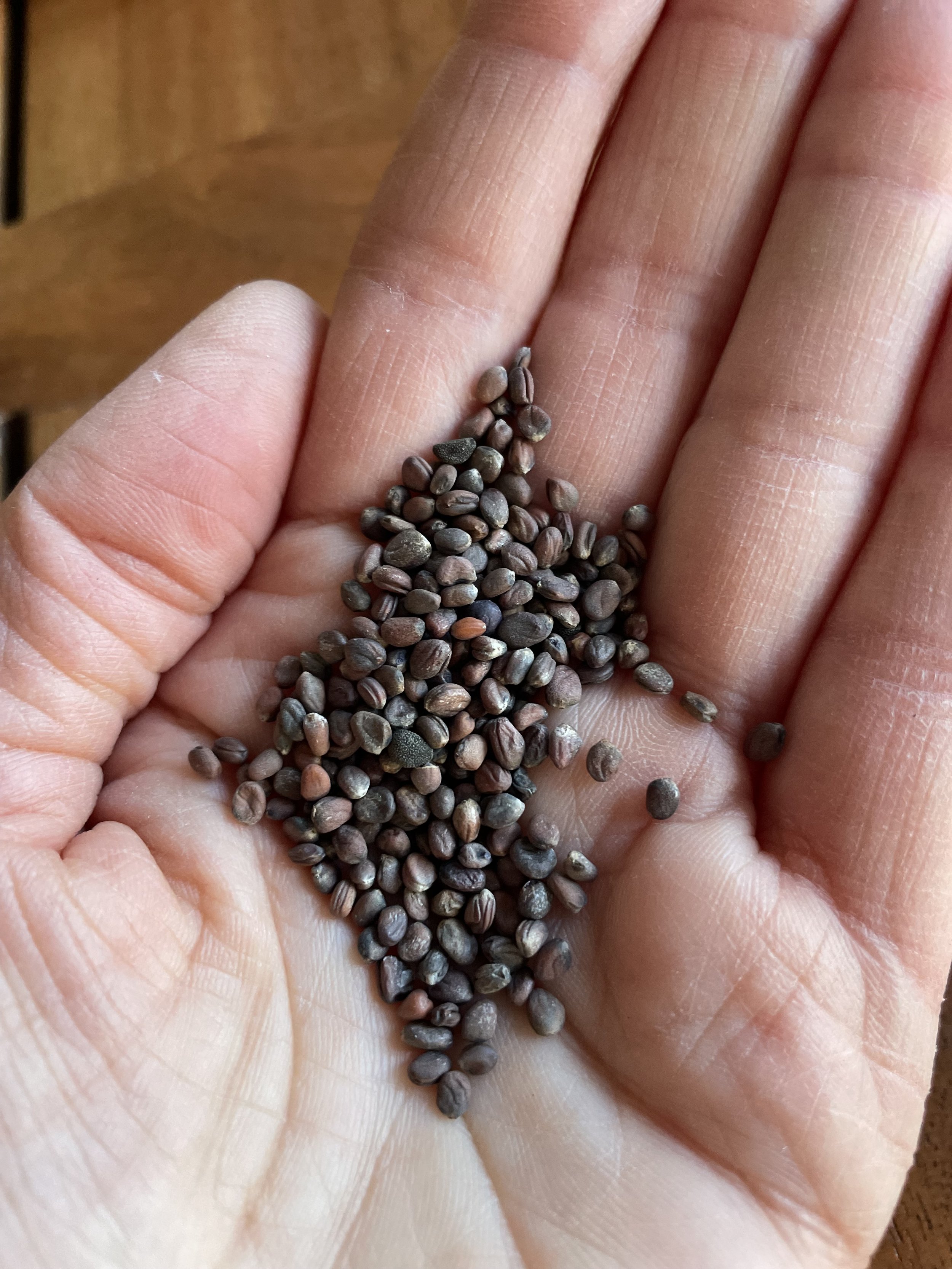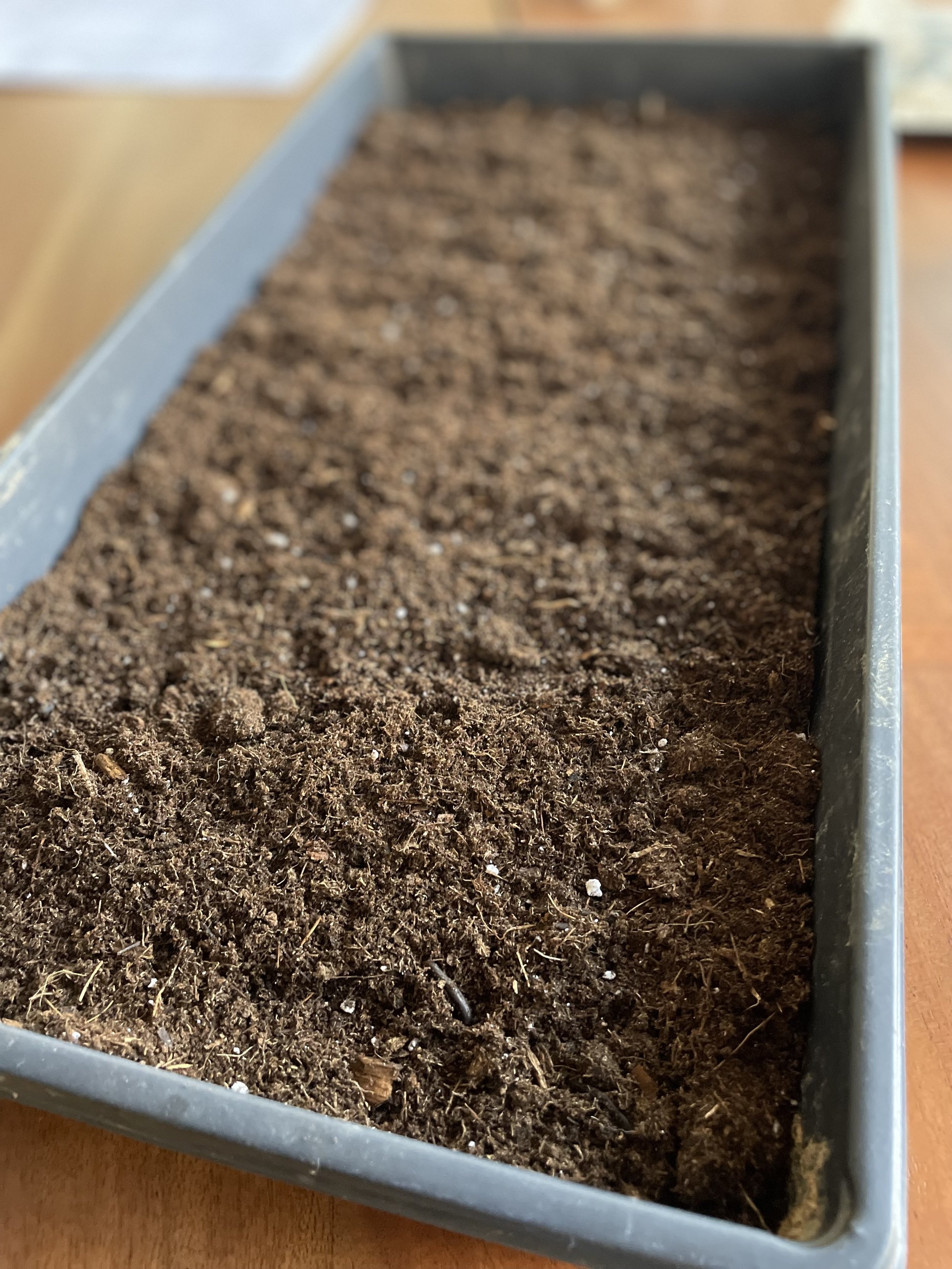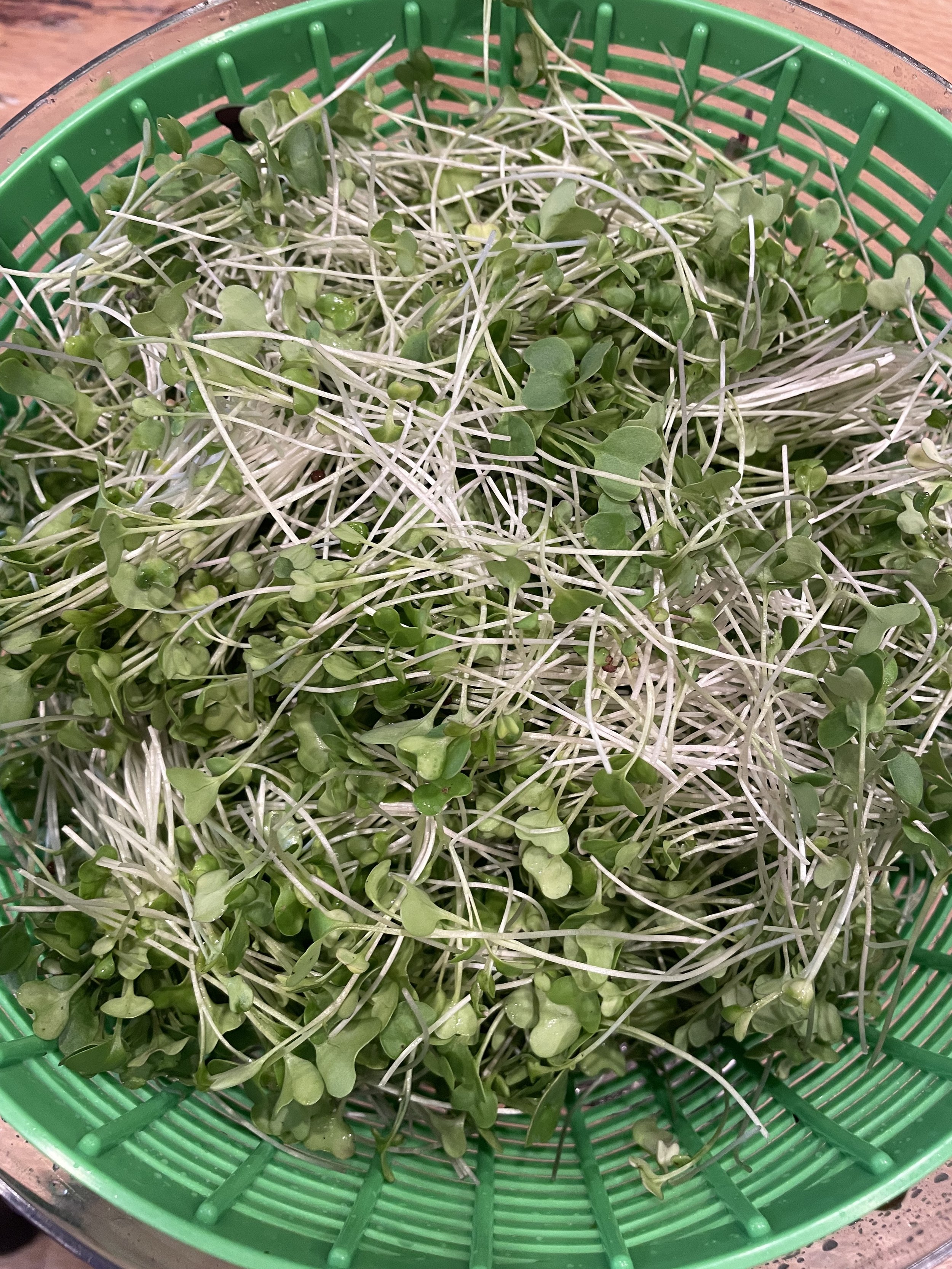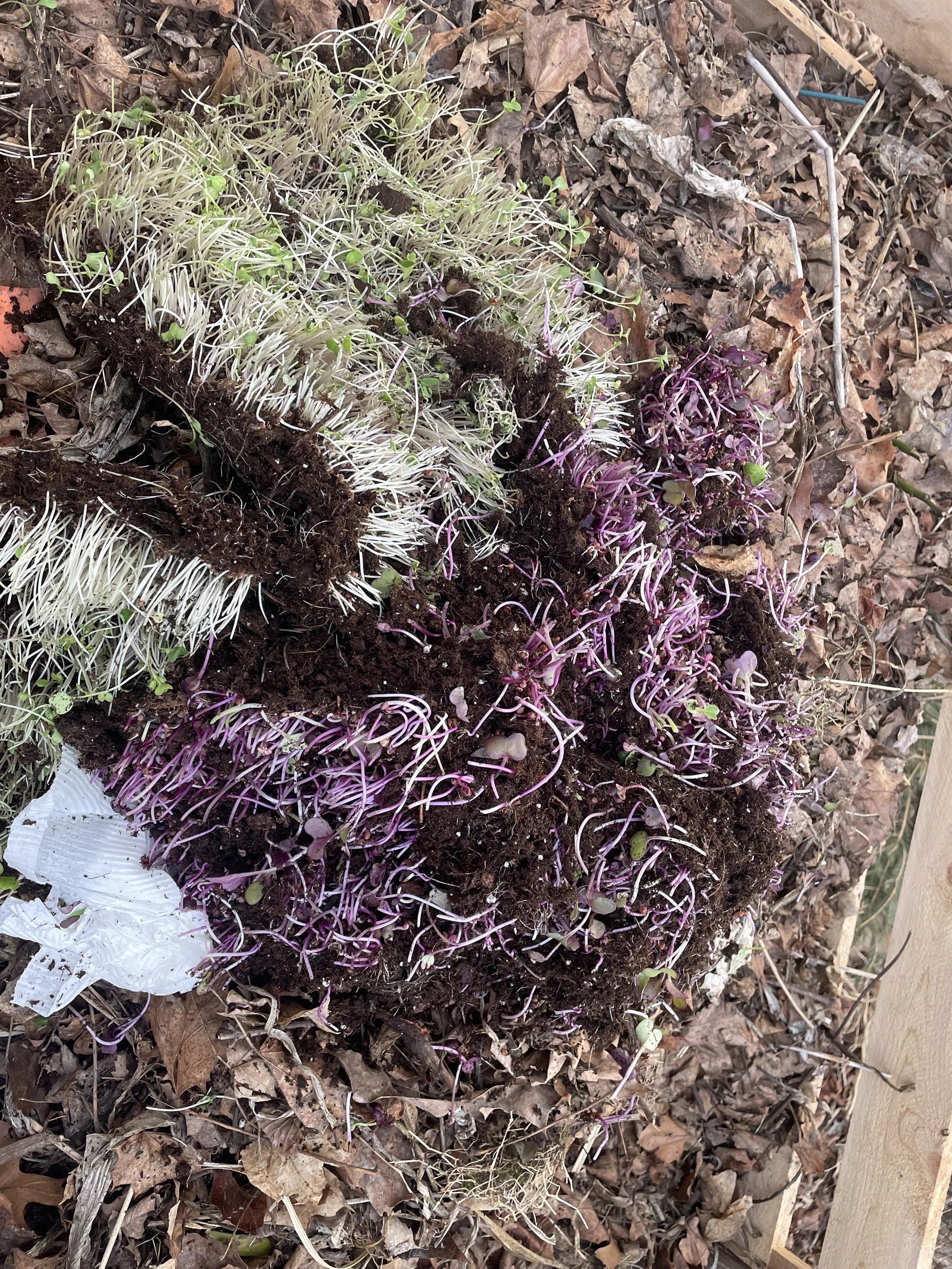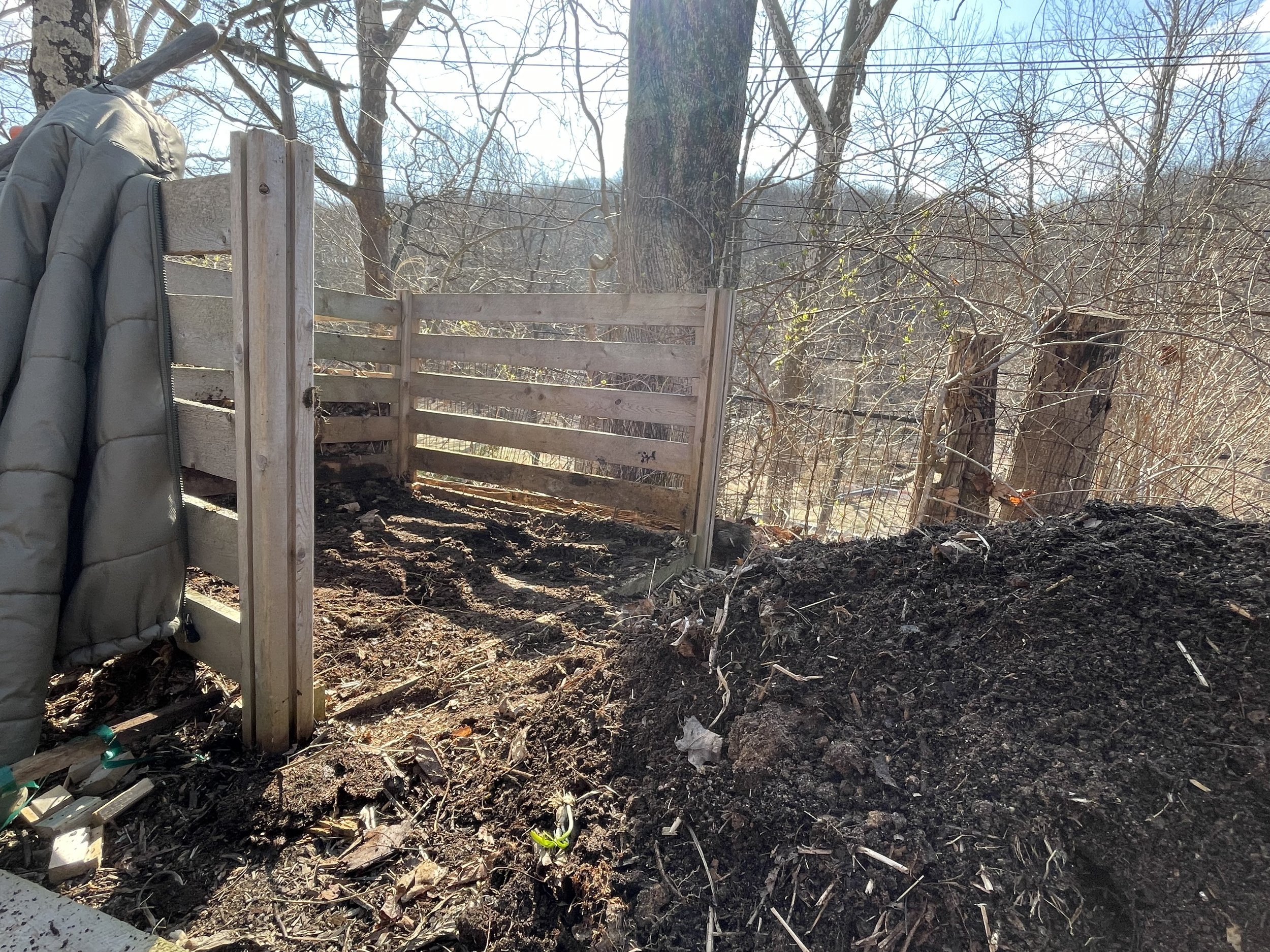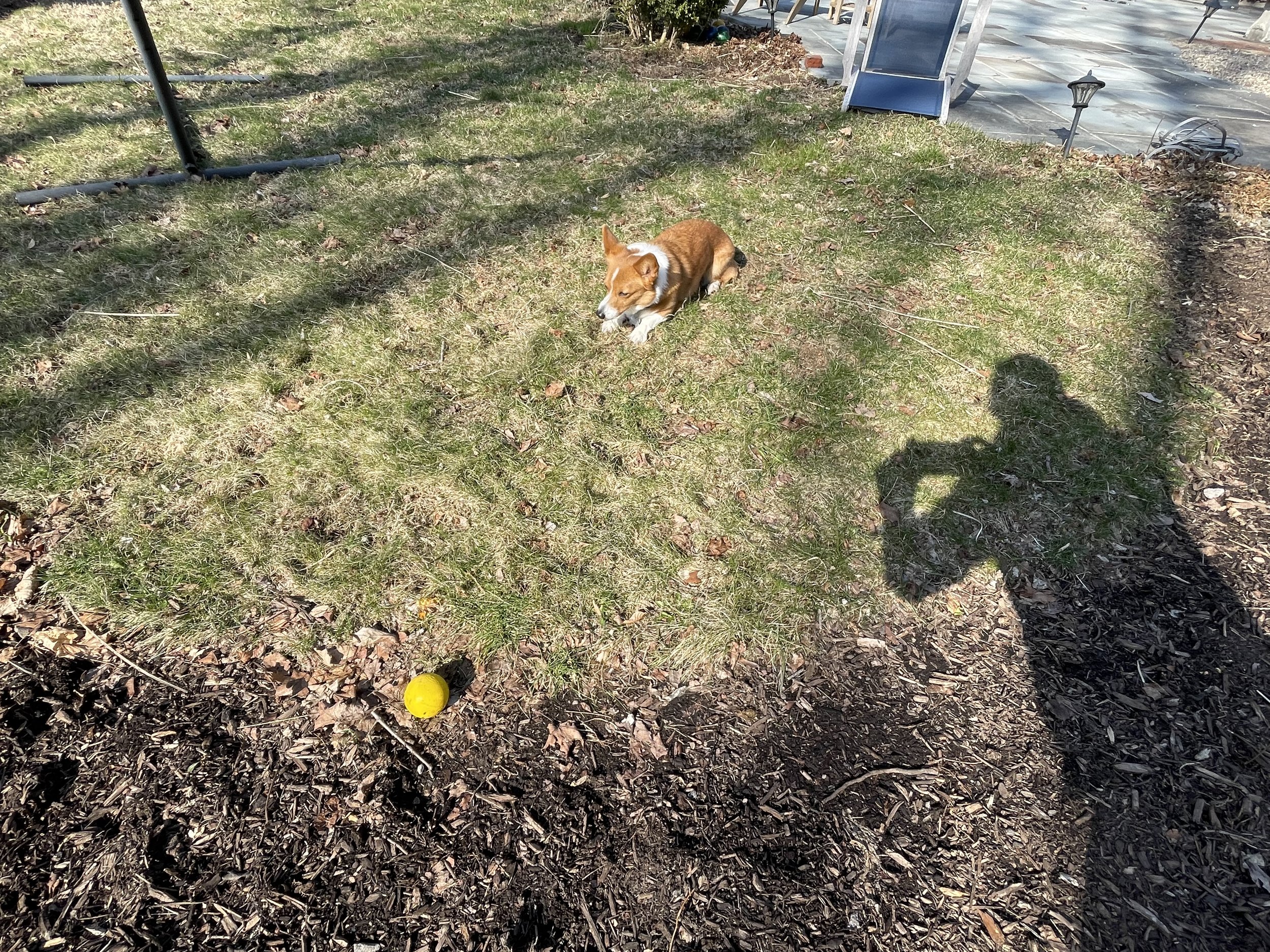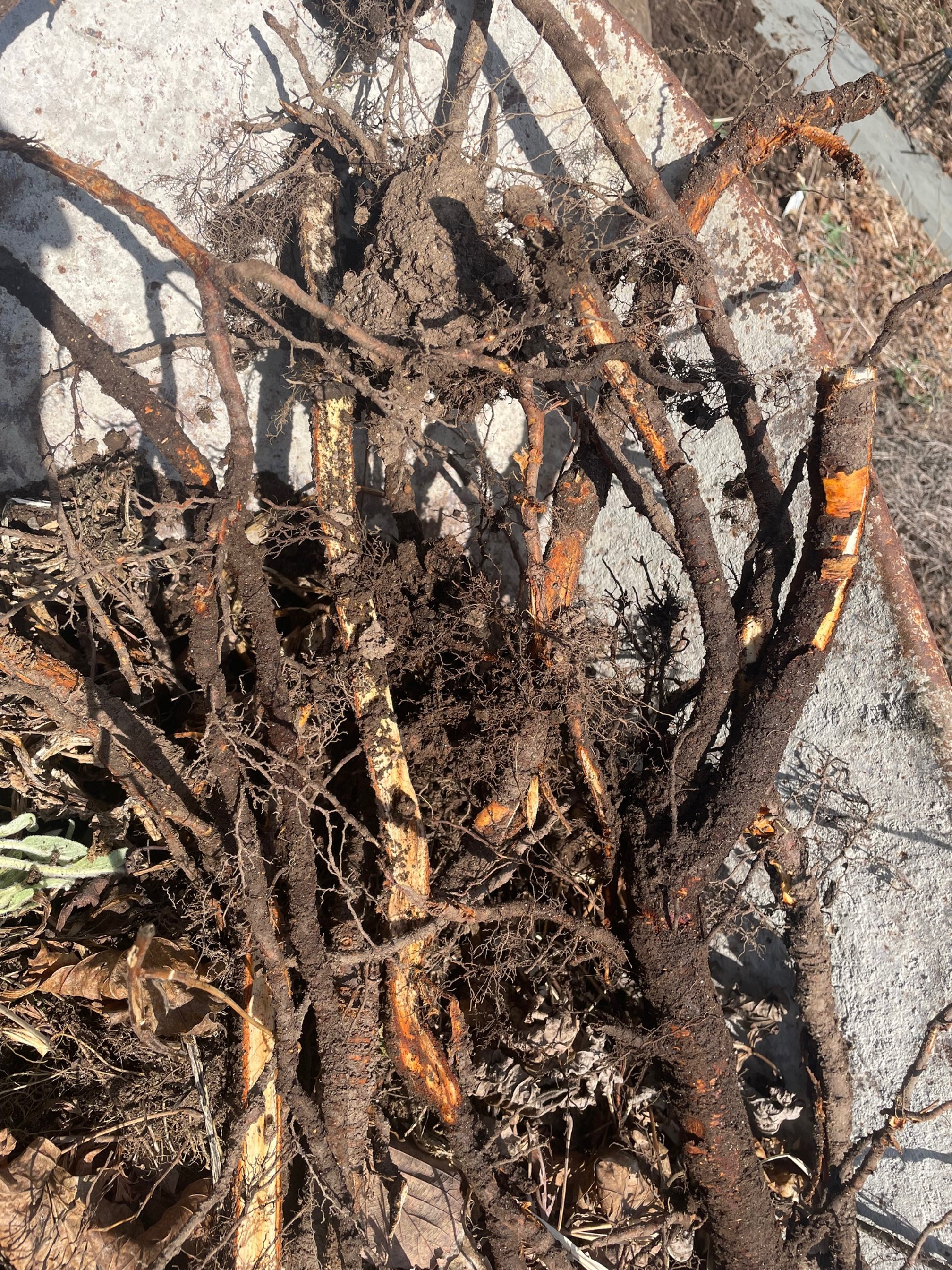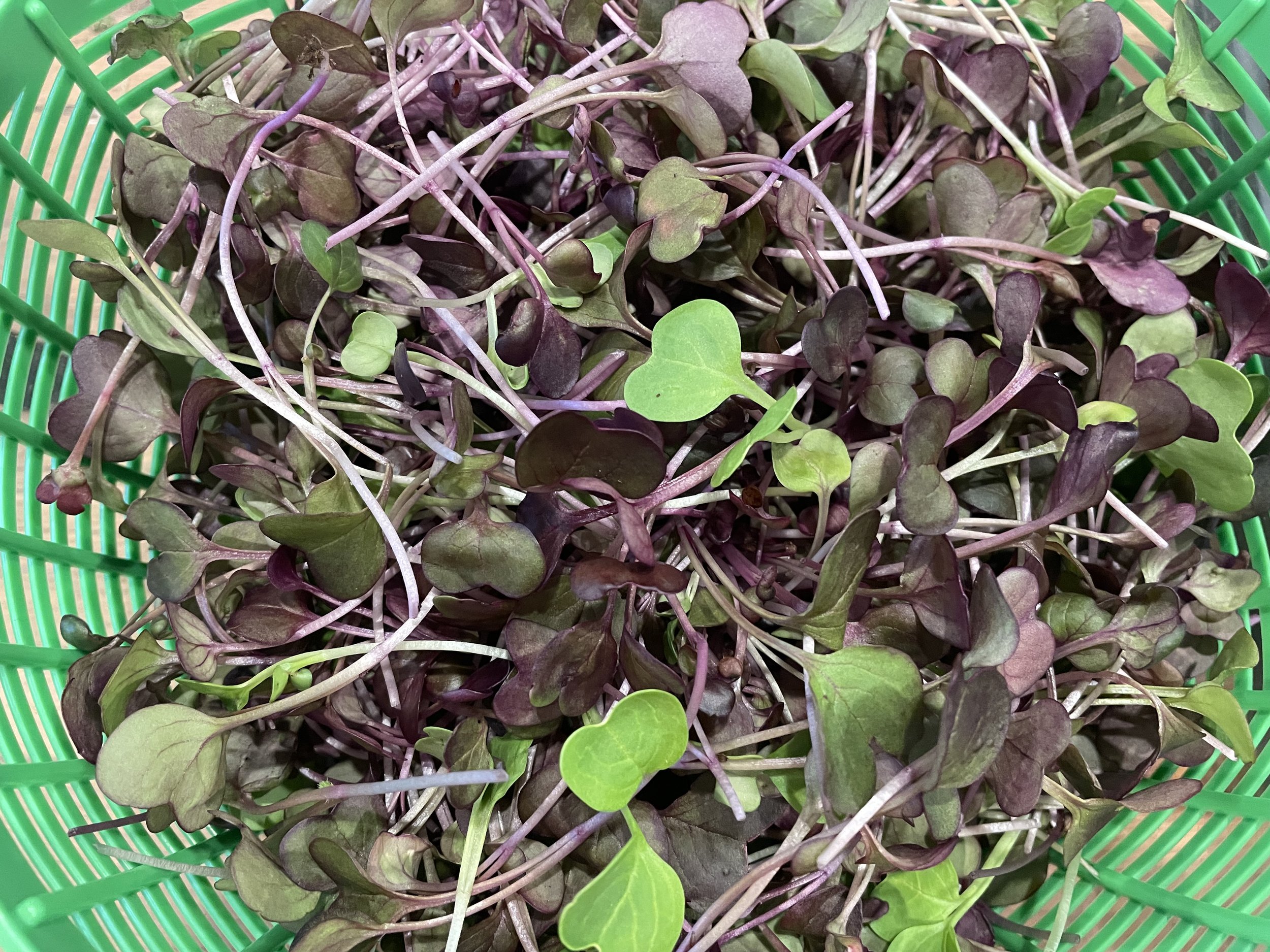
2025 Season
Garden Diary
March 2025
March is a time of preparation for the upcoming growing season. We’ve started our favorite vegetable seeds, eager to see them thrive in our yard. The compost is getting ready to be added to our raised beds, and we’re continuing to grow microgreens—which are not only delicious but also packed with nutrients. There’s plenty of yard work to be done—clearing out old leaves, trimming branches, and cutting back bushes. It’s a busy month! Here’s a little snapshot of what’s happening in March at the Garden in the Hollow:Seeded out microgreens
For the first few days, seeds will be kept moist, on heat mat, under cover until they sprout
Once sprouted put under growl lights (during day) for 7-10 days when they are ready for harvest
Harvested microgreens (Radishes and Broccoli)
After 12 days, the microgreens are ready to be enjoyed! The first picture features radish greens, which have a spicy kick, while the second shows broccoli sprouts, which are milder in flavor—both are absolutely delicious. Once harvested, the growing medium goes straight into the compost. The broccoli sprouts yielded almost 13 ounces, and the radish greens came in at 12 ounces.
Preparing fresh compost for garden beds
Compost is often called "black gold" for a reason—it's one of the best ingredients for a thriving vegetable garden. Rich in nutrients, it provides everything a young seedling needs to grow into a strong, productive plant. Even better, making your own compost costs nothing!
Setting up a composting area in your garden allows you to turn kitchen scraps, leaves, and other organic matter into fresh, nutrient-rich soil. If you haven’t started composting yet, give it a try. With time and a little effort, it will become an invaluable part of your gardening routine.
Making A Surprising Discovery While Preparing Garden Beds
When I removed the soil from my garden bed today, I was shocked to find a tangled mass of roots weaving through the entire space. It explained so much why the bed dried out faster than the others, and why anything that grows underground, like carrots or beets, never seemed to thrive. I had long suspected something was off, but I didn’t expect such an aggressive root invasion.
Looking back, placing the bed so close to a mature cherry tree probably wasn’t the best idea. The tree's roots had slowly made their way into the bed, competing for water and nutrients. I cut away most of the smaller roots but left the large central root alone—I didn’t want to risk damaging the tree. It's too beautiful, especially in spring when it's covered in blossoms, to jeopardize over a few vegetables.

